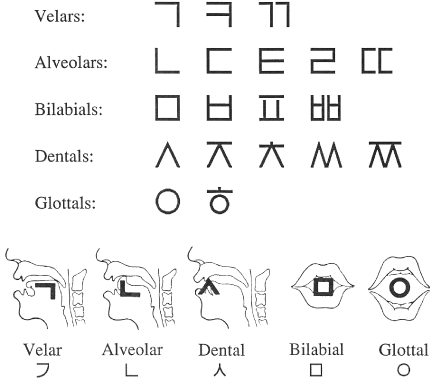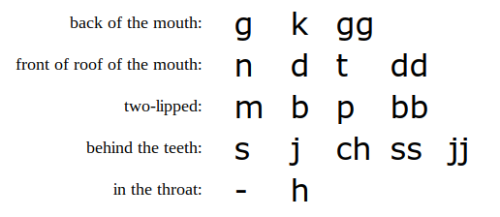allthingslinguistic:A basic schematic of why the Korean alphabet is so cool, from Wright House: Unli
allthingslinguistic:A basic schematic of why the Korean alphabet is so cool, from Wright House: Unlike almost every other alphabet in the world, the Korean alphabet did not evolve. It was invented in 1443 (promulgated in 1446) by a team of linguists and intellectuals commissioned by King Sejong the Great.In the diagram [above], the Korean consonants are arranged into five main linguistic groups (one per row), depending on where in the mouth contact is made. Notice that there is a graphic element common to all the consonants in a particular row. The first consonant in each row is the most basic and is graphically the simplest; this representative consonant for each group is the building block for the other characters in that group. Certain of these modifications are systematic, and yield similarly modified characters in several groups, such as adding a horizontal line to a simple consonant (a “stop” consonant–such as t/d or p/b–rather than a nasal consonant) to form the aspirated consonants (those made with extra air) and doubling simple consonants to form “tense” consonants (no real equivalent in English).Notice that the five representative consonants (the ones in the first column in the upper part of the diagram) are also depicted in the drawings that make up the lower part of the diagram showing the relevant part of the mouth involved. Ingeniously, each of these representative consonants is a kind of simplified schematic diagram showing the position of the mouth in forming those consonants.More details, including subsequent historical changes to Hangul, in the Wikipedia article. -- source link
Tumblr Blog : allthingslinguistic.com
#korean

